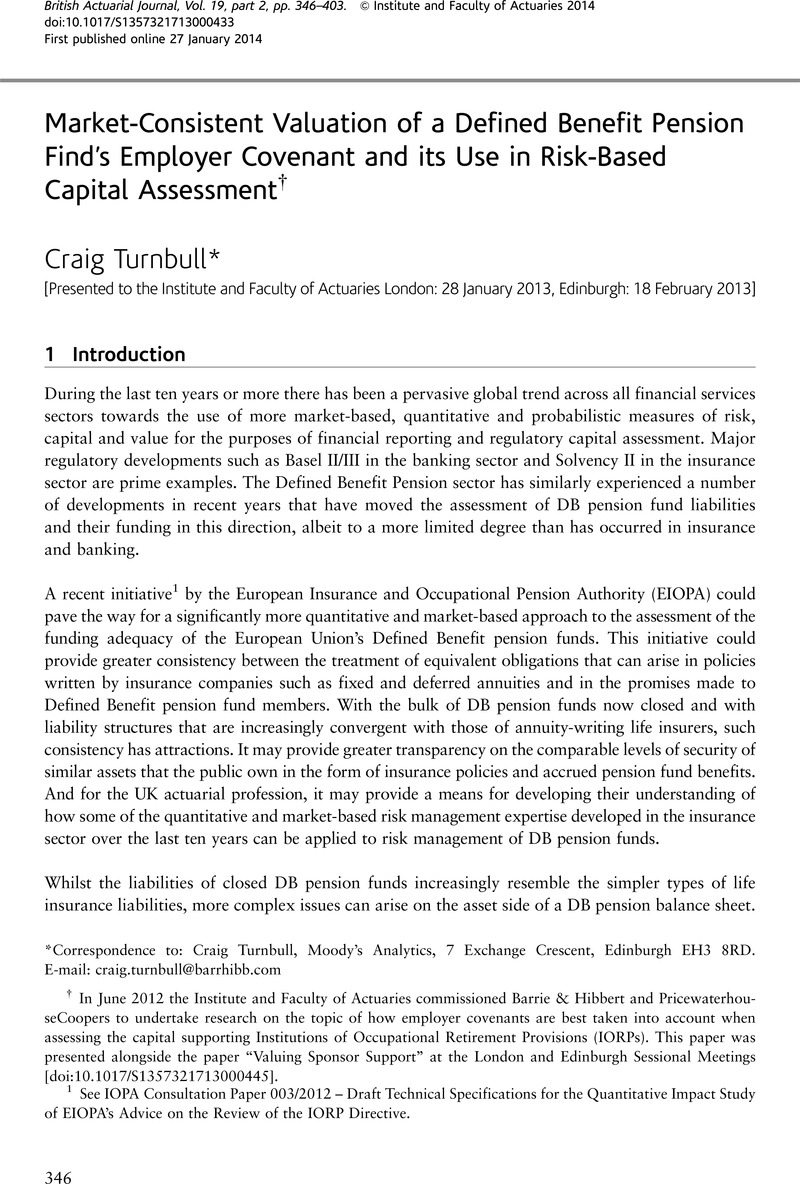Article contents
Market-Consistent Valuation of a Defined Benefit Pension Find's Employer Covenant and its Use in Risk-Based Capital Assessment†
Published online by Cambridge University Press: 27 January 2014
Abstract

- Type
- Sessional meetings: papers and abstracts of discussions
- Information
- Copyright
- Copyright © Institute and Faculty of Actuaries 2014
Footnotes
In June 2012 the Institute and Faculty of Actuaries commissioned Barrie & Hibbert and PricewaterhouseCoopers to undertake research on the topic of how employer covenants are best taken into account when assessing the capital supporting Institutions of Occupational Retirement Provisions (IORPs). This paper was presented alongside the paper Valuing Sponsor Support at the London and Edinburgh Sessional Meetings.
References
- 4
- Cited by




